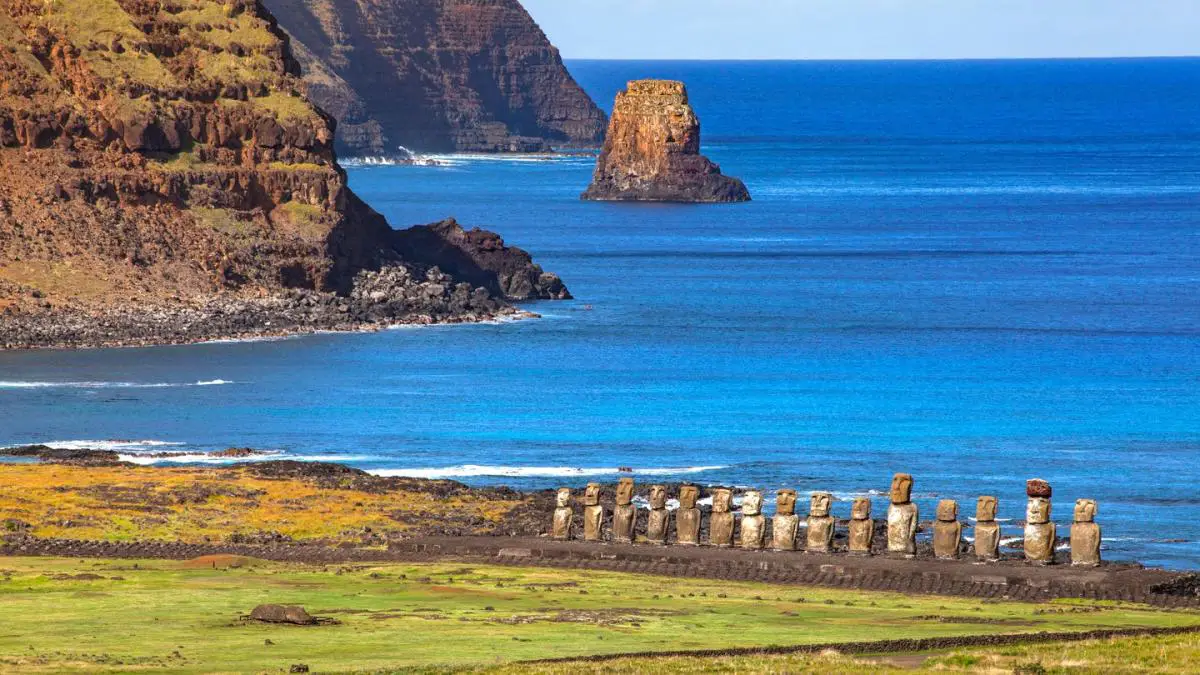-
A team of geologists investigated Easter Island’s age by dating zircon minerals, which turned out to highlight ancient unknowns.
-
A mysterious mineral discovery on Easter Island could be up to 165 million years old.
-
Experts believe the ancient mineral originated when the island’s volcanoes first started.
Geologists studying Easter Island recently opened up another mystery centered around the famous region. A team from Colombia’s Universidad de Los Andes, led by Cuban geologist Yamirka Rojas-Agramonte, traveled to the island to date zircon minerals—a time-tested process for dating volcanoes—and uploaded the results in a pre-print study on Authorea.
In a surprising turn of events, this collection of unexpected ancient minerals ended up showing the team that Earth’s mantle behaves fundamentally differently than has always been assumed. Specifically, it moves much slower than anyone previously thought.
Since Easter Island is volcanic—the lava deposits sit atop an oceanic plate not much older than the actual volcano—dating zircon minerals (several extinct varieties of which are believed to be 2.5 million years old) became the ideal process for establishing the age of the island. When magma cools, the zircon minerals crystalize, and the bits of uranium in them turn into lead through radioactive decay. Because scientists know both how that process occurs and how long it takes, they can date the minerals to pinpoint the age of the island.
But that process led to a wild surprise—according to the paper, 2.5 million years old was actually wildly underselling it. Some of the minerals studied appeared to be up to 165 million years old. That didn’t fit with the known movements of Earth’s mantle and volcanic activity at all.
As the differing zircon deposits showed similar composition, the experts came to believe that they all came from the same magma. But how could that be? If true, it would make the plate below the minerals younger than the minerals itself.
It turns out it’s complicated, but possible. Easter Island volcanoes are known as “hotspot volcanoes,” which form from rock that rises from the Earth’s mantle dubbed ‘mantle plumes.’ When the plumes get close to the base of the Earth’s plates, the rocks of the plume and surrounding mantle melt away and form volcanoes, staying in place as Earth’s plates move over them. As plates shift, mantle plumes can form entirely new volcanoes. Staying active for 165 million years, as suggested by the new mineral discovery, though, was unheard of.
“The difficulty is that the plates form 165 million years ago have long since disappeared in those subduction zones,” said geologists Douwe van Hinsbergen in a statement from Utrecht University. In an attempt to reconstruct that vanishing in detail, van Hinsbergen was brought into the research, and found that the plateau must have disappeared under the Antarctic Peninsula roughly 110 million years ago.
“And that just so happened to coincide with a poorly understood phase of mountain building and crust deformation in that exact spot,” he said. “That mountain range, whose traces are still clearly visible, could well be the effect of subduction of a volcanic plateau that formed 165 million years ago.”
Still, if the plume and mantle were changing so rapidly, the oldest of the minerals should have been carried off, never to be found. But that wasn’t the case. It had to be slow. “We draw the conclusion that those ancient minerals could have been preserved only if the mantle surrounding the plume is basically as stationary as the plume itself,” van Hinsbergen said.
All the questions kept leading to one answer—these ancient minerals are the product of a mantle behaving in a much different way than anyone ever thought possible. Our planet now holds one less mystery in its depths—at least, according to this team.
You Might Also Like


Leave a Comment